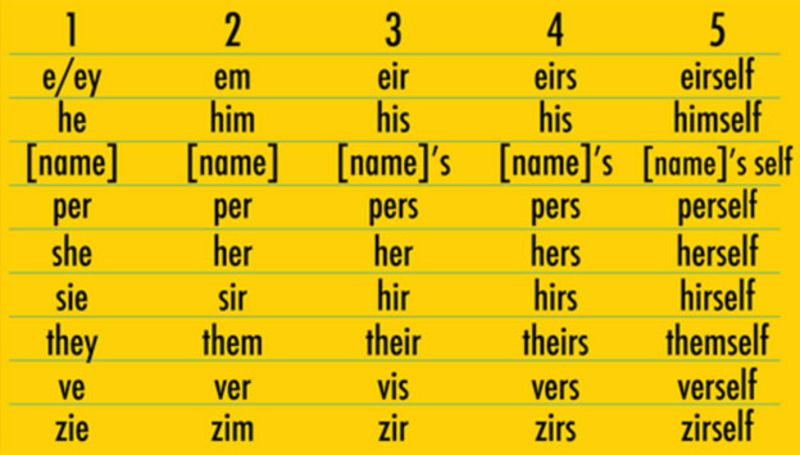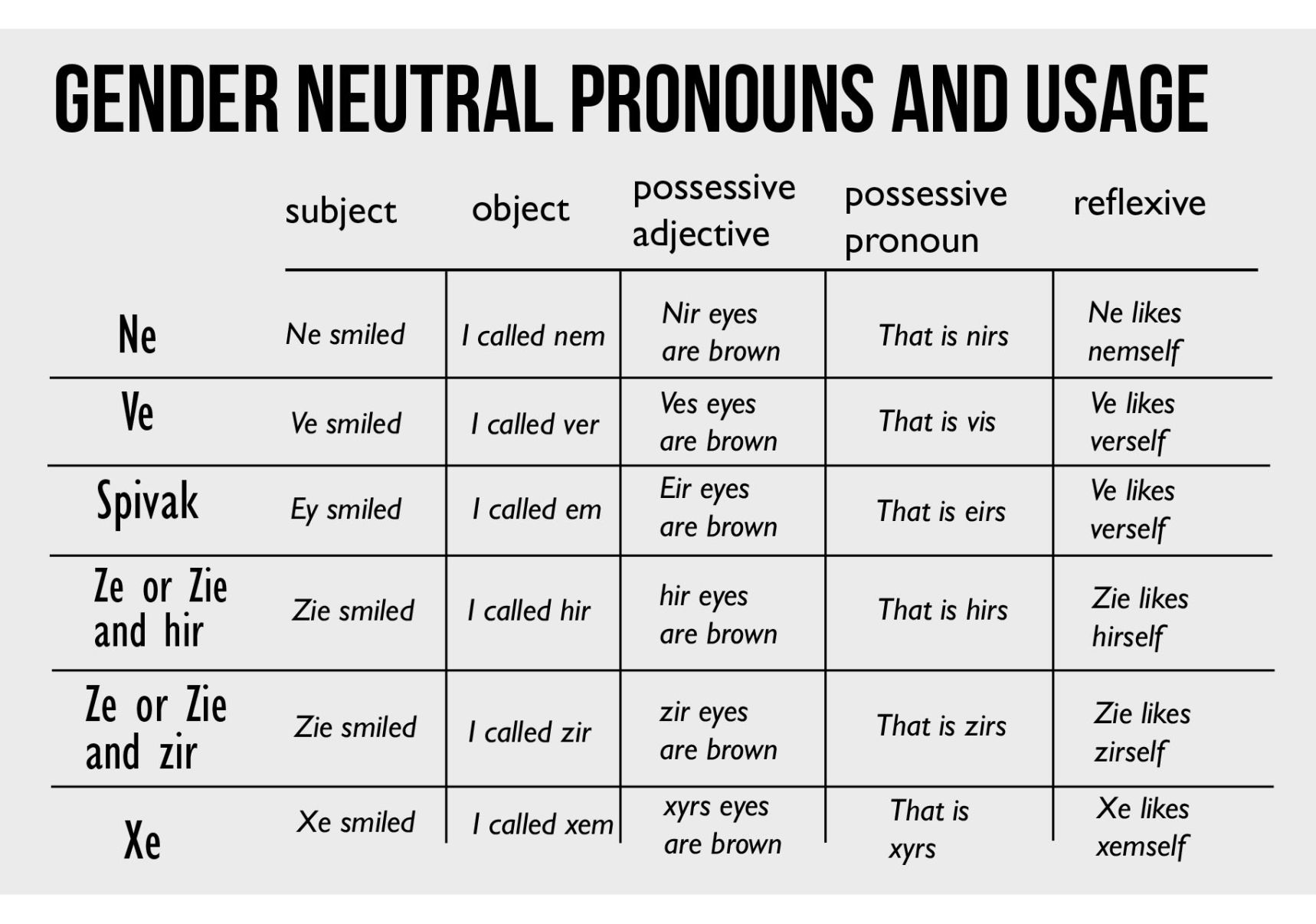

In addition to the gender-neutral pronouns listed in the above chart (they, ze, and ve), a couple other common gender-neutral pronouns include xe/xem/xyr/xyrs/xemself and per/pers/perself.

What are the different gender (and gender-neutral) pronouns?

In the reflexive, however, "they" is used singularly (i.e. Though it can be confusing, some non-binary people choose the pronouns "they" and "them" in place of "he/him" or "she/her," since there is no gender associated with "they/them." As you'll see in the chart below, these pronouns mostly take on plural verbs-as in, "they are walking"-but refer to a singular person. These people feel as though the typical male and female pronouns do not accurately represent their gender identities and expressions. ae0fcc31ae342fd3a1346ebb1f342fcbįor transgender people, a change of pronouns can help them identify more closely with the gender they are inside.Īnd recently, more and more people have begun adopting gender-neutral pronouns-those that neither connote male nor female gender. What this means is that, even if a person was born with female genitalia, they may still elect to use masculine pronouns to describe themselves, depending on what suits their gender expression.

What are gender pronouns?Ī gender pronoun is "the pronoun that a person chooses to use for themselves" to describe their gender, according to New York City's Department of Social Services. Since gender-neutral pronouns can be a bit confusing, we've come up with a comprehensive guide (and chart!) to help you understand them, just in time for Pride Month. While males and females tend to use the pronouns we're all familiar with to describe themselves-he/him and she/her-some non-binary individuals choose different pronouns that you may not have heard of before.


 0 kommentar(er)
0 kommentar(er)
